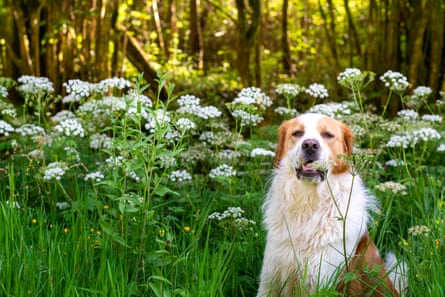Have you ever wondered why your dog is eating your beautifully cropped lawn or nibbling on the grass in the dog park?
Eating grass is a common behavior in pet dogs. Some surveys show up to 80% of guardians notice their dogs regularly snacking on the grass.
Grass eating isn’t a new behavior either, or only done by our new designer dog breeds. Studies in Yellowstone national park show plant matter (mostly grass) is found in up to 74% of wolf spots, suggesting the behavior is possibly inherited from the beginning of doggy time.
So why do dogs eat grass?
A lot of people think dogs eat grass when they have an upset stomach, believing grass causes dogs to vomit. This is probably not the case; a study with 12 dogs that ate grass daily found there were several episodes of vomiting and the ones that did occur came after the dog had eaten a meal.
And if a dog has a mild gastrointestinal disturbance because of something they’ve been fed, they are in fact less likely to eat grass than if they were fed a normal diet.
Other theories include that dogs eat grass because they want a laxative or that it provides roughage in their diet (get that fiber!).
Like the vomiting discussed above, there is little to no scientific proof for most of these theories. For example, in the study of 12 dogs mentioned above, all of them were wormed and had no previous digestive problems. Yet all 12 still happily ate grass (709 times).
Their main finding was that when the dog had not yet had their daily meal, they were more likely to eat grass. In short, the hungrier the dog, the more likely they were to eat some grass.
The answer to why your dog eats grass may simply be: because they like it. Your dog may be bored and chewing on grass is something to do.

Maybe your dog just enjoys eating grass. Ripping grass from the ground can be satisfying. The texture and taste of grass offers something different to what they usually eat. You may even notice they prefer grass in certain seasons; perhaps fresh spring grass is a favorite delicacy.
Is there any reason why you shouldn’t let your dog eat grass?
Well, yes, there are several. Firstly, you may not want your dog eating your neighbor’s immaculately presented fancy Kikuyu lawn.
More importantly, though, grass is sometimes treated with herbicides. Grass at the local oval or parkland may have been treated or sprayed. Some local councils use a non-hazardous dye to show where the grass has been sprayed with herbicide, which is very helpful.
Lawn chemicals are frequently detected in lawn for up to 48 hours after they’re applied, and have also been detected in the urine of dogs with access to grass treated this way.

Research has suggested there may be a link between bladder cancer in dogs and exposure to herbicides.
In fact, dogs may even act as sentinels; the same chemical exposures appear in the urine of dogs and people sharing the same environment.
If you are using herbicides on your own grass, remove your dog, their toys, food and water bowls from the area prior to any application.
Make sure the pesticide has completely dried out before you allow the dog back in the area, and be sure to check the packaging for the appropriate drying time period.
This is particularly the case for granular pesticides or fertilizers that soak into the soil, as these can require up to 24 hours or longer.
If you want to reduce the risk even further, hand weeding may be a better option.
Apart from grass, many leaves, flowers and berries from common plants can be toxic to your dog. This includes plants such as oleander and arum lily; even oregano and bay leaves can cause vomiting and diarrhea in dogs.
One of the best things you can do for your dog is take them for a walk. And if they eat some grass along the way, provided it has not been sprayed with herbicide, you have nothing to worry about.
Don’t worry if they occasionally vomit. If there is more serious vomiting or diarrhea, however, please consult your vet.
-
This article was originally published by the Conversation. Susan Hazel is an associate professor at the School of Animal and Veterinary Sciences at the University of Adelaide. Joshua Zoanetti is a PhD candidate in veterinary bioscience at the University of Adelaide.
Allow The Conversation content?
This article includes content provided by The Conversation. We ask for your permission before anything is loaded, as they may be using cookies and other technologies. To view this content, click ‘Allow and continue’.
